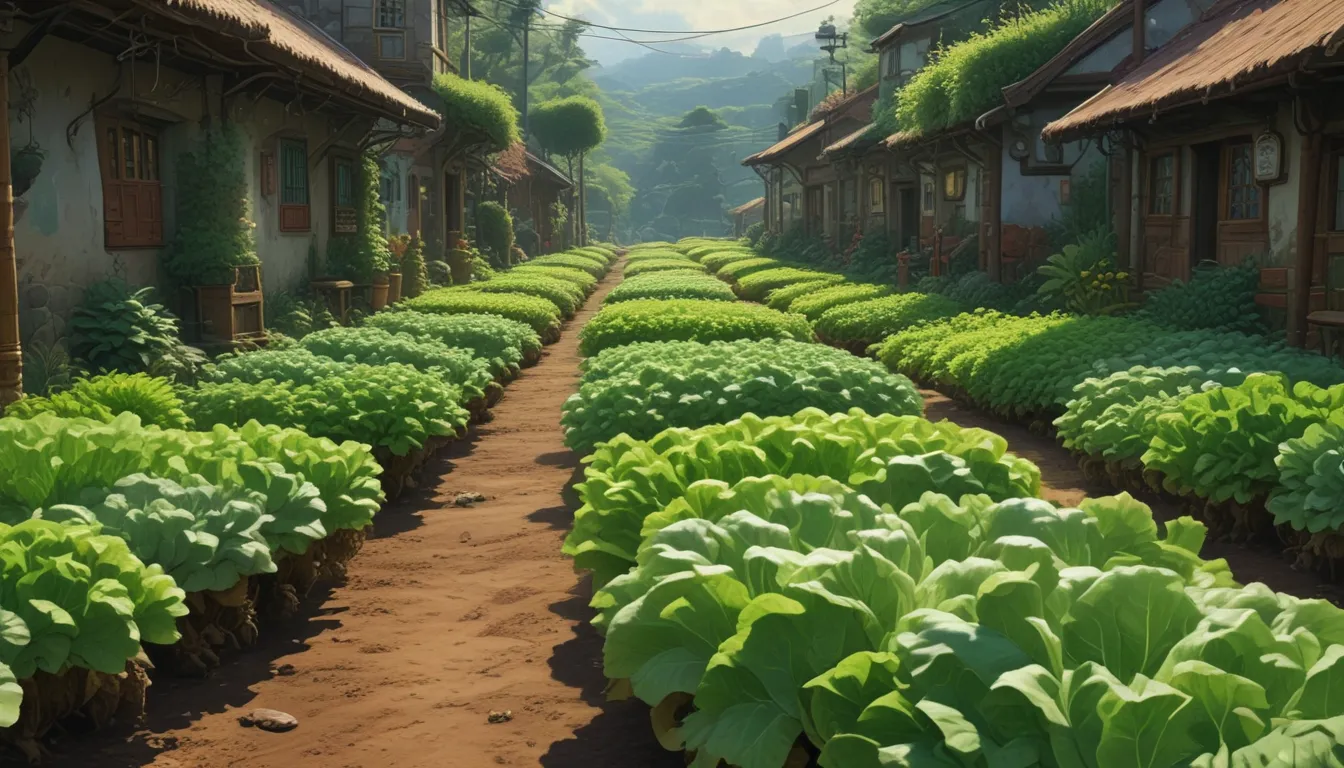A Comprehensive Guide to Planting and Growing ‘Winter Density’ Lettuce

If you’re a fan of lettuce, you probably appreciate the differences in taste and texture between various cultivars. One lettuce variety that stands out is ‘Winter Density.’ It offers a juicy, crisp texture and a sweet flavor that surpasses common romaine varieties typically found in stores.
Growing ‘Winter Density’ lettuce is a rewarding experience. It’s an adaptable cultivar that requires minimal care, making it an excellent choice for both novice and experienced gardeners. In this comprehensive guide, we’ll explore everything you need to know to successfully grow ‘Winter Density’ lettuce in your own garden.
Cultivation and History
‘Winter Density’ lettuce is a unique cultivar with an interesting history. This variety was bred in England in the 1800s and gained popularity in France during the late 19th and early 20th centuries. It is a cross between butterhead and romaine lettuce, boasting eight-inch-tall heads that mature in approximately 55 to 65 days.
Characterized by an upright growth habit and a dense heart, ‘Winter Density’ is frost-tolerant and can thrive in partial sunlight. It has a remarkable ability to resist bolting in moderate heat or freezing conditions. In addition to its common name, you may also find this lettuce marketed as ‘Craquerelle du Midi’ or ‘Craquante D’Avignon.’
One of the unique features of ‘Winter Density’ lettuce is its post-harvest longevity. When stored properly, harvested heads can last up to a week, surpassing the shelf life of most lettuce cultivars.
‘Winter Density’ Propagation
To grow ‘Winter Density’ lettuce successfully, consider planting seeds directly outdoors in the spring or fall. This cultivar thrives in cool weather conditions, allowing for an extended growing season. ‘Winter Density’ lettuce typically matures in around 55 days, providing a relatively quick turnaround from planting to harvest.
Whether you choose to direct-sow seeds or start them indoors for transplantation, ‘Winter Density’ lettuce is relatively easy to propagate. Compact and upright in growth, this lettuce variety can be grown in a small area, maximizing space efficiency in your garden.
From Seed
Direct-sowing ‘Winter Density’ seeds involves preparing the garden bed with well-rotted compost and spacing the seeds about four inches apart. Ensure the seeds receive sufficient light for germination and maintain consistent moisture levels in the soil during the germination period.
Alternatively, starting seeds indoors in containers allows you to gain a head start on the growing season. Transplant the seedlings outdoors once they have developed at least two true leaves and the soil conditions are suitable for planting.
Transplanting
When transplanting ‘Winter Density’ seedlings, ensure the ground is adequately prepared, and the plants are spaced four inches apart. Gently remove each seedling from its container and transplant it at the appropriate depth in the soil. Maintain consistent moisture levels to promote healthy growth throughout the growing season.
How to Grow ‘Winter Density’ Lettuce
‘Winter Density’ lettuce thrives in full sun but can tolerate partial shade, especially during hot spells. To prevent the leaves from becoming bitter, ensure the soil remains moist and cool. Consider using mulch to protect the roots and maintain soil moisture levels, promoting optimal growth conditions for your lettuce plants.
As a relatively low-maintenance cultivar, ‘Winter Density’ lettuce does not require excessive care once established. Keep the soil moist but avoid waterlogging, and refrain from splashing water on the leaves during watering to prevent leaf damage. Additionally, incorporating compost at planting time eliminates the need for additional fertilizer, contributing to the plant’s overall health and vigor.
Growing Tips
- Plant ‘Winter Density’ lettuce in full sun or partial afternoon shade.
- Amend the soil with compost at planting to provide essential nutrients.
- Maintain consistent moisture levels in the soil to promote healthy growth.
Maintenance
Routine maintenance practices for ‘Winter Density’ lettuce include keeping weeds at bay and removing damaged outer leaves as needed. Maintaining an optimal growing environment by managing weeds and removing damaged foliage allows the plants to focus their energy on producing healthy leaves for harvest.
Where to Buy ‘Winter Density’ Lettuce
As a popular lettuce cultivar, ‘Winter Density’ can be found at various retailers and nurseries. Consider purchasing seeds from reputable suppliers such as High Mowing Organic Seeds to ensure high-quality, reliable sources for your planting needs.
Managing Pests and Disease
While ‘Winter Density’ lettuce is generally resistant to most pests and diseases, vigilant monitoring is essential to prevent infestations. Keep an eye out for common pests such as aphids, cabbage worms, flea beetles, and cabbage loopers, as well as slugs and snails, which can pose a threat to your lettuce plants.
Implementing pest control measures such as floating row covers and using organic pest management methods can help protect your ‘Winter Density’ lettuce from potential infestations. Familiarize yourself with common fungal diseases that may affect this cultivar and take preventive measures to safeguard your plants against bacterial leaf spot, damping off, downy mildew, and lettuce mosaic virus.
Harvesting
Harvest ‘Winter Density’ lettuce heads when they reach maturity, typically around 55 days after planting. To prolong the shelf life of harvested heads, consider leaving the roots attached or wrapping them in a damp paper towel before storing in the refrigerator. Maintaining freshness is key to enjoying crisp, flavorful lettuce in your culinary creations.
Preserving
To preserve ‘Winter Density’ lettuce heads, wrap them in a paper towel or cloth and store them in the refrigerator’s crisper drawer. If harvested with roots intact, wrapping them in a damp paper towel can extend their shelf life. Proper preservation methods can enhance the longevity of your lettuce heads, allowing you to enjoy them for an extended period.
Quick Reference Growing Guide
- Plant Type: Annual vegetable
- Origins: Mediterranean region
- Hardiness (USDA Zone): 3-11
- Season: Spring, fall, winter
- Exposure: Full sun to partial sun
- Time to Maturity: 55 days
- Spacing: 4 inches
- Water Needs: Moderate
- Common Pests and Diseases: Aphids, cabbage worms, flea beetles, loopers; Bacterial leaf spot, damping off, downy mildew, lettuce mosaic virus
Winter is Wonderful
Growing ‘Winter Density’ lettuce offers a delightful experience for gardeners seeking fresh, flavorful greens throughout the year. Whether you’re an avid lettuce enthusiast or a novice gardener, ‘Winter Density’ is a cultivar that promises to impress with its distinctive taste and easy-growing nature.
Are you currently growing ‘Winter Density’ lettuce in your garden? Share your thoughts and experiences in the comments section below. For more insights on lettuce cultivation and helpful growing tips, explore additional guides on growing various lettuce varieties to enhance your gardening knowledge and skills.
In conclusion, ‘Winter Density’ lettuce is a versatile and flavorful cultivar that adds a unique touch to your garden. By following the comprehensive guide provided, you’ll be well-equipped to successfully plant and grow this delightful lettuce variety in your own garden. Happy growing!





